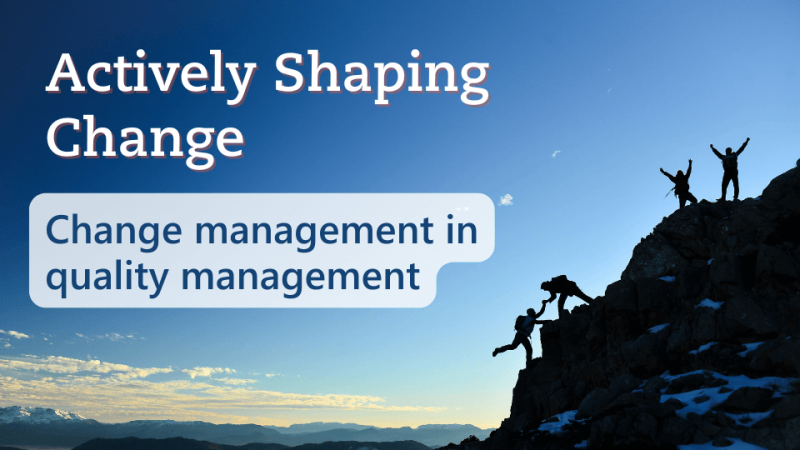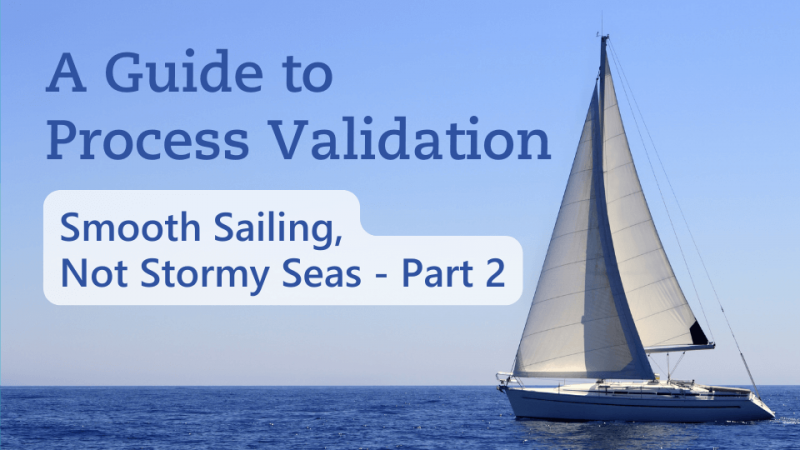Interim assessment of MDR implementation: Initial results and remaining challenges
12/05/2023
Do you have any questions about the article or would you like to find out more about our services? We look forward to hearing from you!Make a non-binding enquiry now
The EU Medical Device Regulation (EU) 2017/745 (MDR) will soon celebrate its 6th birthday - high time for an interim review. What is the status of MDR implementation in practice? What experiences have been gathered in the meantime? In this article, we compare the expectations towards MDR with what has been achieved so far – and we identify the remaining challenges. In addition, our experts assess the status of MDR implementation.Almost six years ago, the EU Medical Device Regulation (EU) 2017/745 (MDR) was published. It replaces Directives 93/42/EEC for medical devices and 90/385/EEC for active implantable devices. With its new requirements, the MDR aims to improve the safety, quality, and efficacy of medical devices in the European Union (EU).These requirements include, for example:
The MDR gives detailed content specifications and requires new conformity assessment procedures for each product. This forces manufacturers to both revamp the documentation of their existing products and provide higher quality clinical evidence. For this, they need additional resources, including staff, time, and investment in new tools and processes. Resource limitations and expertise:
Some small and medium-sized medical device manufacturers have limited resources and expertise to meet the new MDR requirements. As a result, product approvals may be delayed, and they may face higher costs and competitive disadvantages compared to larger manufacturers. Availability of Notified Bodies:
Another challenge is the limited number of Notified Bodies for conformity assessment of medical devices according to MDR. As a result, there are often long waiting times and delays in bringing medical devices to market. Technical documentation:
In October 2022, the European Association of Notified Bodies (Team-NB) identified two main reasons for delays in reviewing technical documentation in its "Best Practice Guidance for the Submission of technical documentation under Annex II and III of Medical Device Regulation (EU) 2017/745": incompleteness and untraceability of content.In fact, in a survey, Team-NB found that the number of incomplete submissions had increased by 4% in 2022 compared to the previous year.Metecon's experience also shows that many technical documentations are still incomplete and lack the content required in Annex II. Common conspicuities are:
Best Regards
 Ali Alkhatib
Ali Alkhatib
- new classification rules,
- the designation of a Responsible Person (PRRC) for regulatory compliance,
- more comprehensive labeling of medical devices through the introduction of a UDI code and more stringent clinical evaluation requirements, as well as
- detailed post-market surveillance (PMS) of devices.
What were the expectations for technical documentation?
Under the MDD, technical documentation showed a wide range of variation in terms of its structure and level of detail. This was reflected in the variety of terminology used: some referred to a "main product file", a "design dossier" or a "technical file", and some already referred to "technical documentation". The structure was sometimes based on the so-called "Summary Technical Documentation (STED)", occasionally on the specifications of the respective Notified Body, or was self-invented and proven in practice now and then. The level of detail of the respective contents was just as varied.Therefore, expectations were high after the introduction of MDR’s Annex II. In contrast to the MDD, there are now detailed specifications on the contents of the technical documentation and "character traits" have been introduced: "The technical documentation and, if applicable, the summary thereof to be drawn up by the manufacturer shall be presented in a clear, organised, readily searchable and unambiguous manner."Thus, for the first time, a legal text required both that the technical documentation should contain a comprehensive mapping of the conformity-relevant content regarding the medical device, and that it should be explicitly accessible to third parties (especially Notified Bodies). This third-party perspective should ensure a higher quality preparation of the content.What is the general state of MDR implementation today?
With the practical implementation of the MDR requirements, the challenges for manufacturers have increased in recent years - as these examples show: Complexity and scope of documentation also for existing products:The MDR gives detailed content specifications and requires new conformity assessment procedures for each product. This forces manufacturers to both revamp the documentation of their existing products and provide higher quality clinical evidence. For this, they need additional resources, including staff, time, and investment in new tools and processes. Resource limitations and expertise:
Some small and medium-sized medical device manufacturers have limited resources and expertise to meet the new MDR requirements. As a result, product approvals may be delayed, and they may face higher costs and competitive disadvantages compared to larger manufacturers. Availability of Notified Bodies:
Another challenge is the limited number of Notified Bodies for conformity assessment of medical devices according to MDR. As a result, there are often long waiting times and delays in bringing medical devices to market. Technical documentation:
In October 2022, the European Association of Notified Bodies (Team-NB) identified two main reasons for delays in reviewing technical documentation in its "Best Practice Guidance for the Submission of technical documentation under Annex II and III of Medical Device Regulation (EU) 2017/745": incompleteness and untraceability of content.In fact, in a survey, Team-NB found that the number of incomplete submissions had increased by 4% in 2022 compared to the previous year.Metecon's experience also shows that many technical documentations are still incomplete and lack the content required in Annex II. Common conspicuities are:
- insufficient development documentation,
- no sufficient verification documents,
- there is no evidence according to the current standards, and
- the clinical evaluation does not consider all the requirements of MDR’s Annex XIV.
What do experts say?
These challenges lead to many discussions, which our experts assess for you:Thorsten Stumpf, IT Compliance, Verification & Regulatory Affairs Manager at Metecon, sees that the MDR’s requirements have presented very significant challenges to both Notified Bodies and manufacturers. The result has been product discontinuations, lengthy and expensive product approvals, and fewer Notified Bodies with very long waiting times for the necessary approvals and testing. He adds, "The bottom line is that a supply shortage of medical devices within the EU is no longer such a far-fetched scenario. The European Commission is trying to counteract this scenario with appropriate extensions of the transition periods."We at Metecon will also continue to provide our customers with the best possible support for their innovative products when it comes to market access in the EU.According to Julian Raum, Verification & Regulatory Affairs Manager at Metecon, there is another challenge in terms of communication and data exchange between suppliers and manufacturers as the MDR requires significantly more information from suppliers: "Depending on the outsourced process and its influence on the quality of the product, a lot of time has to be invested to create an understanding of the ‚MDR’s new regulatory requirements‘ among suppliers." Looking at newly developed products, Julian Raum sees an even bigger problem: "A large part of the manufacturers are still very busy trying to get a grip on the existing portfolio. Therefore, I think it is more than challenging to additionally find a Notified Body that tests a new product in a timely manner."Besides these challenges, the MDR also brought improvements - for example, regarding technical documentation.Stefan Kemmann, Technical Documentation & Regulatory Affairs Manager at Metecon, noticed three aspects that were particularly positive:- Almost all technical documentation contains a product description, which is usually based exactly on the Annex II 1.’s specifications. Since these product descriptions have usually been newly created for the technical documentation according to MDR, they are easy to read, and the product can thus be understood "clearly" and "unambiguously".
- Manufacturers have understood that they run at least text recognition over their PDF files so that searchability is at least technically guaranteed.
- Often, the technical documentation is now structured according to the chapters of Annex II, which also contributes to better readability.
Conclusion
The first review after six years of MDR implementation shows that many challenges remain. Particularly burdensome are the higher complexity of documentation, manufacturers’ limited resources and the scarce number of Notified Bodies available. In addition, the MDR provides for improvements, e. g. in the technical documentation - among other things regarding uniform product descriptions, the structure of the technical documentation and searchability. Nevertheless, MDR implementation is far from complete - as the extended transition periods confirm. It will take some time until the MDR’s improvements become more noticeable and measurable compared to expectations.What is your personal balance sheet in terms of MDR implementation? What are the biggest associated challenges for your company? Let's talk about it. We will gladly support you with our comprehensive MDR expertise. Our team will be happy to work with you to find solutions to help you meet the MDR’s requirements.Best Regards
Our blog posts are researched and created with the utmost care, but are only snapshots of the regulations, which are constantly changing. We do not guarantee that older content is still current or meaningful. If you are not sure whether the article you have read on this page still corresponds to the current state of regulation, please contact us: we will quickly place your topic in the current context.

Regulatory Affairs Expert
Regulatory Affairs & Technical Documentation


